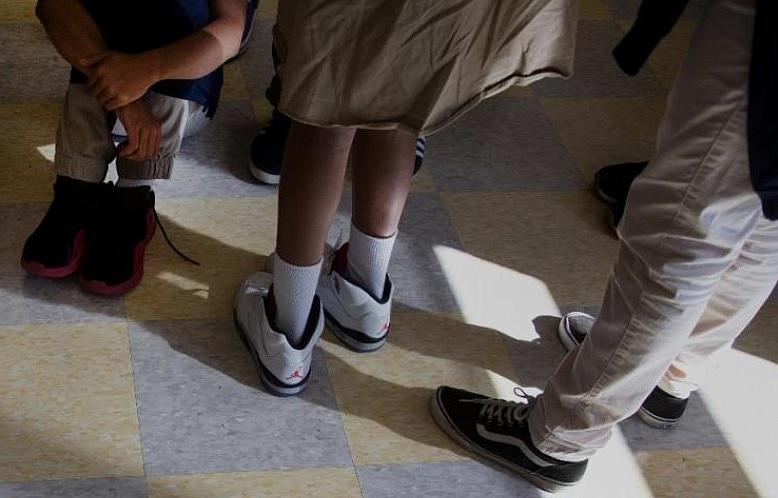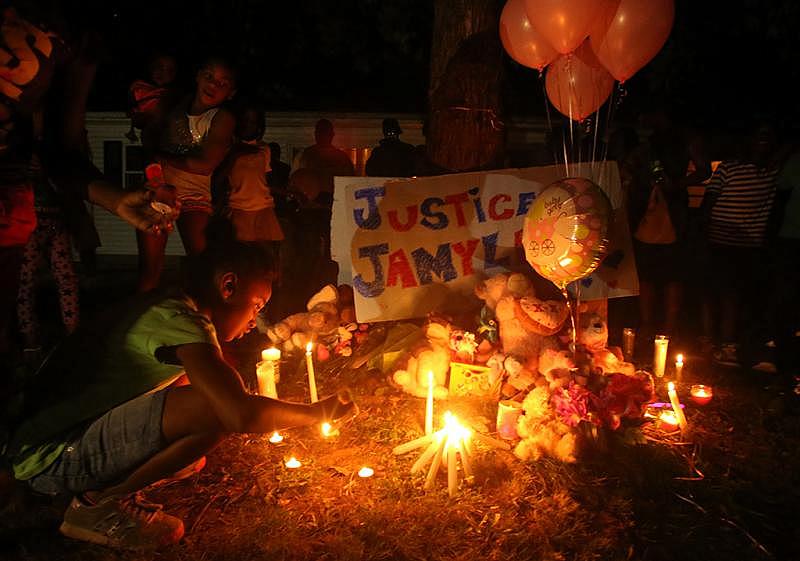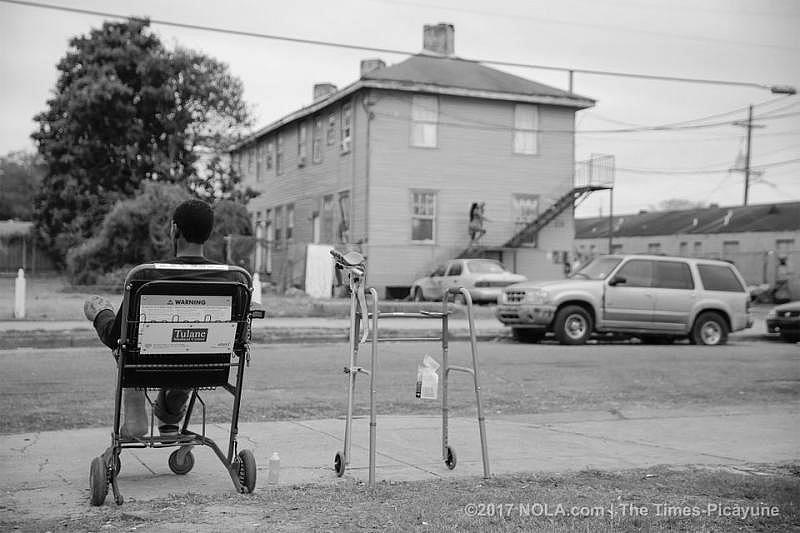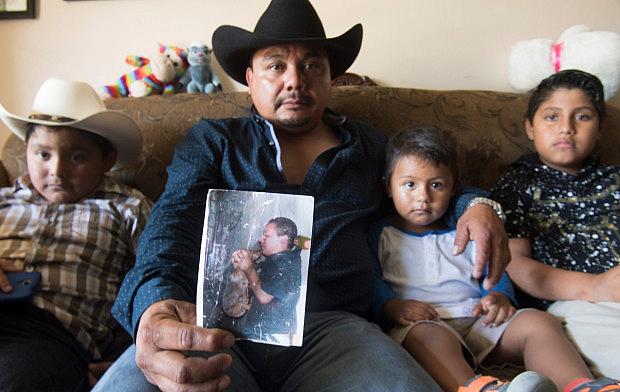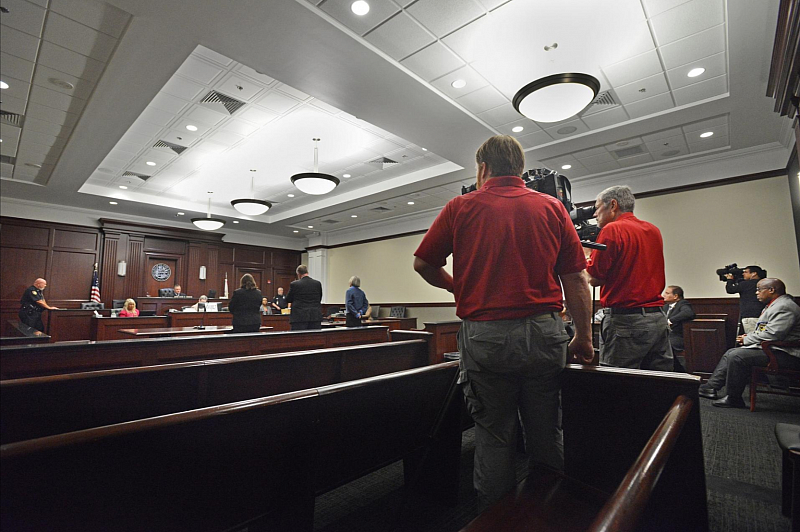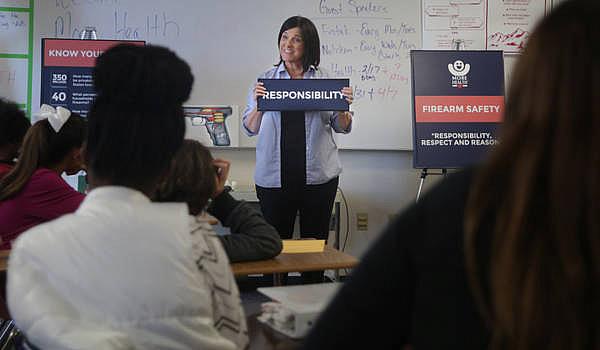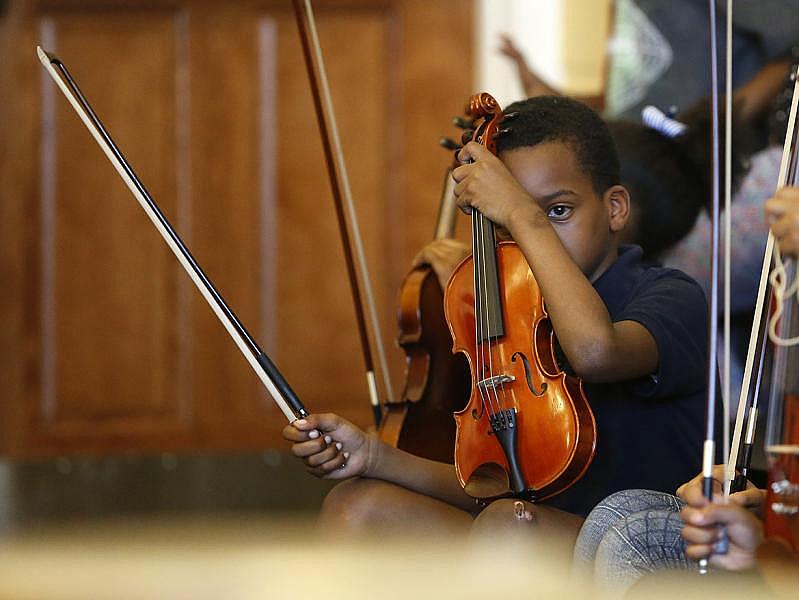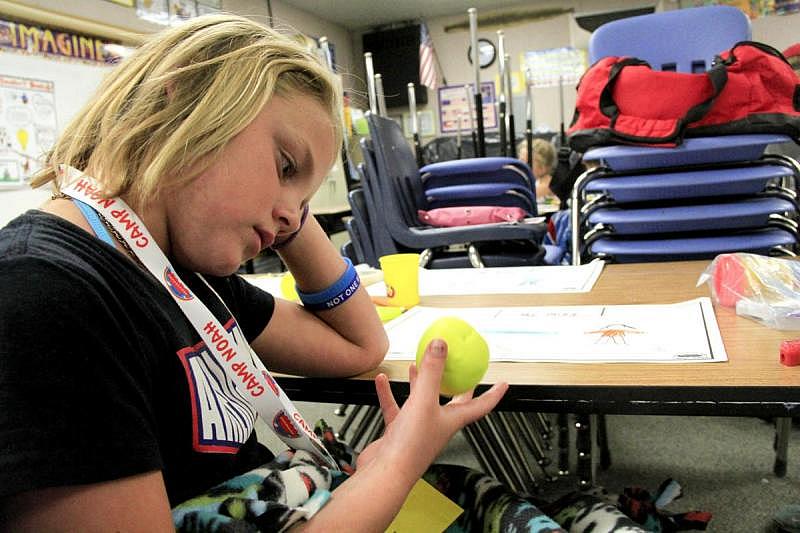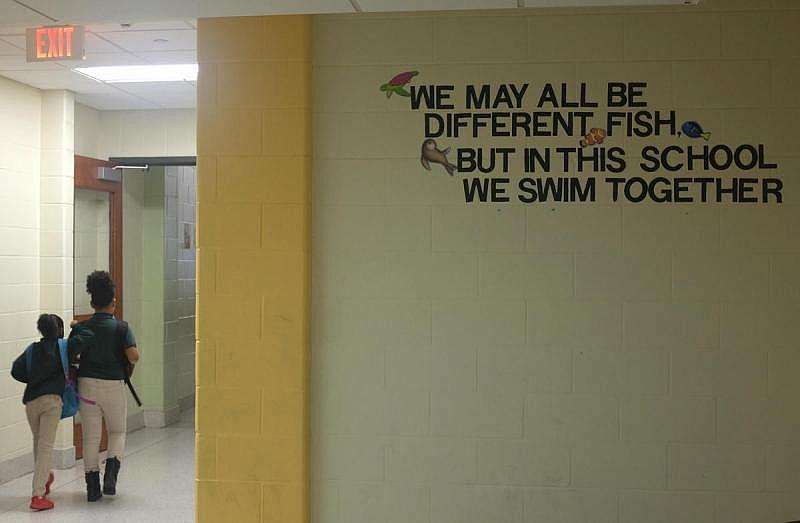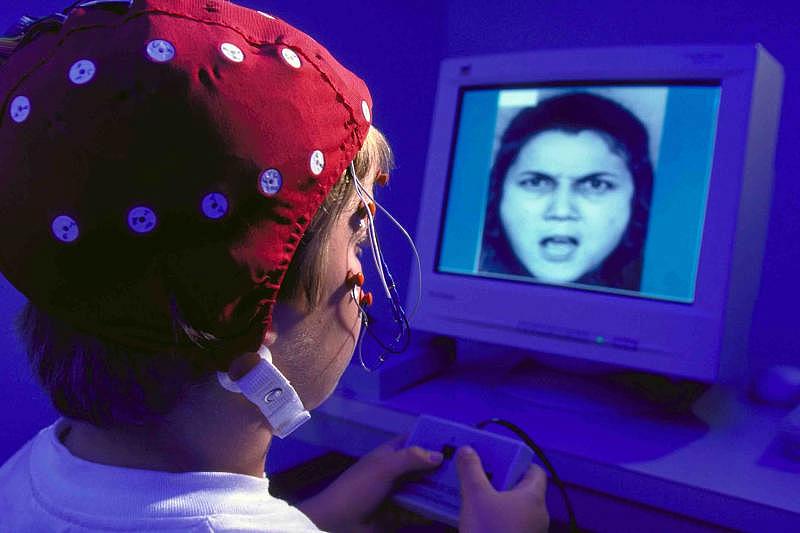Center for Health Journalism Support for Reporting on Trauma
The Center for Health Journalism helps journalists understand how trauma during childhood can affect a person’s health and wellbeing over the life span. Whether traumatized by abuse, neglect, community violence or the daily deprivations associated with chronic poverty, children can suffer consequences that prevent them from reaching their full potential.
Founded in 2004, the Center offers training and grants to journalists from around the country, exposing them to scientific breakthroughs, promising solutions and new ways of telling stories. We form partnerships with news outlets that yield compelling projects that put trauma on the public’s--and policymakers’--radar screens. And our weekly blog, Children’s Health Matters, highlights groundbreaking research and effective interventions for a national audience.
Training, Reporting Grants and Media Partnerships
During our annual five-day National Fellowship at the University of Southern California, journalists learn about how trauma affects a child’s brain and what builds resilience, informing their coverage for years to come. We also provide reporting and engagement grants to media partners to help them undertake substantive projects
Among the reporting projects on childhood trauma that we have nurtured in recent years:
Immigration Status and Mental Health, U.S. News & World Report: 2017 National Fellow Ruben Castaneda traveled to California, Maryland, Virginia and Washington state to document the extreme stress that many child immigrants -- and U.S.-born children of immigrants -- are experiencing because of the Trump Administration's anti-immigrant rhetoric and stepped-up deportations by Immigration and Customs Enforcement. "It's an overwhelming sense of having no control over their entire life," Nayeli Chavez-Dueñas, an associate professor at the Chicago School of Professional Psychology, told him. "It steals their life. They're not able to live the day-to-day life a child should live," said Dr. Charles Sophy, medical director of the Los Angeles County Department of Family Services.
The Crisis Within, St. Louis Post-Dispatch: In Ferguson, Missouri, the St. Louis suburb that the shooting death of Michael Brown elevated to infamy, chronic violence continues to create a toxic environment for children. A year after Brown’s death, fourth grader Jamyla Bolden was doing homework on her mother’s bed when a stray bullet hit her, and she died in her mother’s arms. Weaving scientific research on how exposure to violence harms young brains with compelling profiles of the children who still live in Jamyla’s neighborhood, reporter Nancy Cambria put human faces on the toll that trauma plays in children’s lives. The project catalyzed a community conversation about how to prevent gun violence and help children heal from their exposure to it, and Cambria and photograph Laurie Skriven won numerous national awards for the project.
Collateral Damage, The Baltimore Sun: Reporter Andrea McDaniels, photographer Lloyd Fox and editor Diana Sugg spent more than a year chronicling the impact of community violence on residents of a neighborhood in Baltimore, the city with the nation’s second highest murder rate in 2017. Instead of focusing on those who died, they focused on the survivors. community. They introduced readers to a 53-year-old man who had been paralyzed by a stray bullet when he was just 17. A 29-year-old whose brain was damaged when he was beaten and stabbed in the heart during a robbery. A mother whose heart was broken by the murders of two sons. An 11-year-old mourning the death of her older sister. "You hear about the shootings, but you don't hear about the aftermath It's like you're killing 10 other people when you kill one. It's just slowly," said Annette March-Grier, executive director of Roberta's House, a grief support center that borders on the Broadway East and Oliver neighborhoods.The Sun enriched the reporting with an innovative community engagement initiative, funded with a second grant from the Center, that ensure that the voices of the community were reflected in the reporting. The Sun produced a 20-minute video featuring storytelling from four high school students who were given cameras to document how they see their neighborhoods — and ways they could improve them. In the videos, one student said he could die any day, while another talked about the constant struggle to survive. The project led to the award of a $75,000 grant for violence prevention efforts by a coalition of community groups in the neighborhood on which it was focused, and Reporter Andrea McDaniels won numerous national awards, including first place for public health reporting from the Association of Health Care Journalists; the 2015 Kavli Science Journalism Gold Award from the American Association for the Advancement of Science; the James Aronson Award for Social Justice Journalism from Hunter College; and an honorable mention from Columbia University’s Dart Award for Excellence in Coverage of Trauma.
The Children of Central City, New Orleans Times-Picayune: The Central City neighborhood of New Orleans is one of the city's poorest communities. Almost three-quarters of its residents are African American, and the average household income is just under $36,000. It is also wracked by violence. In 2017. 10 percent of the city's 175 recorded murders took place there. 2017 National Fellows Richard Webster and Jonathan Bullington captured what it's like to grow up in Central City through the lens of Central City’s A.L. Davis Park youth football team, whose 9 -and 10-year olds have attended funerals for slain parents and cousins, friends and classmates and walked past active crime scenes while heading to school. They can distinguish between the sound of fireworks and gunfire, and they know what to do when they hear the latter. Twenty-eight former players have died in the last two decades, many as a result of violence.
One Family's Story, Orange County Register: When gang violence rose to a 20-year high in 2017 in the city of Santa Ana, California, city and school officials, turned their attention to some of the root causes: trauma facing children at home, in school or in their neighborhood. The Santa Ana Unified School District – one of the largest in the state – expanded mental health services to help students struggling with trauma. Reporter Denisse Salazar captured the challenges facing children growing up in the city's marginalized, largely Latino neighborhoods by profiling one family, the Secundinos, who lost one child, 14-year-old Angel, to gang warfare eight months before his daughter was born, and now worry about losing her, Angel's three younger brothers or his many cousins The Secundino family has been mired in poverty for years, and several family members are gang members; others are in prison for gang-related crimes. Therapy has helped Angel's father, Hugo, deal with his profound grief and a better, more attentive parent and provide a more stable home and nurturing environment to his surviving children. As a result of Salazar's reporting, Santa Ana officials decided to offer a summer basketball program to give youth an alternative to gangs.
When Kids Kill, Florida Times-Union: Cristian Fernandez was born to a 12-year-old mother, conceived through a rape. He and his mother by then 14, were placed in foster care together in South Florida when he was 2. Just months before he turned 12, his stepfather shot and killed himself in front of his family to avoid arrest on child-abuse charges. A few months later, Cristian beat his 2-year-old half-brother, with whom he'd been left alone, so severely that the toddler spent two days on life support before dying at a hospital Convicted of manslaughter, Cirstian became one of a disproportionate number of youths in Jacksonville, Florida serving prison time for murder. 2017 National Fellow Tessa Duvall's Fellowship project explored the trauma that permeated.
Viririana Covarrubias’ son, 2-year-old Sebastian, kicks a soccer ball at their Fresno home in May.
Dear Cleveland, Cleveland Plain Dealer: 2016 National Fellows Rachel Dissell and Brie Zeltner received one of the Center's community engagement grants to help them capture and amplify the voices of Cleveland's youth in their ongoing Fellowship project, which focuses on what it is like to grow up in a city in which more than half of children have families with incomes below the poverty line, one in three kids in some neighborhoods have elevated levels of lead in their blood and more than three-fifths of kindergartners were off track in language and literacy proficiency last year.
Enduring Addiction, New Mexico Public Radio: Española is part of a cluster of small towns in Rio Arriba County, about an hour north of Santa Fe, that has been struggling with an intergenerational heroin problem since veterans returning home from Vietnam brought their addictions home with them. Opioid addiction has since permeated almost every aspect of daily life — f many parents are in prison, many students are struggling and dropping out and social service agencies -- and grandparents-- are stretched thin. Española's story has been told many times, but 2016 National Fellow Ed Williams had an idea about how to tell it a different way. "Instead of putting my focus on the data and the budget numbers, I would need to put human experiences of people living through the epidemic at the center of the story," he wrote in a post-reporting essay for this site. With a community engagement grant from the Center for Health Journalism, he set out to build relationships in the community even before his reporting got under way. "People (especially kids) told me that outsiders tended to assume they were drug addicts and, as they put it, 'losers' — stereotypes that can impact self-esteem, cause stress, and in turn lead to more drug use and addiction. The community saw the issue differently, largely as a result of the cultural disenfranchisement and neglect by the state government over the decades. Taking the time up front to really grasp the epidemic from their perspective helped me to avoid perpetuating the negative news cycle that people had grown so weary of, and just as importantly, it let me frame the story in a way that really resonated with the community."
In Harm's Way, Tampa Bay Times: Until 2016 National Fellow Kathleen McGrory finished analyzing millions of hospital discharge records and thousands of medical examiner reports, no one knew just how many children in Florida were killed or injured each year by guns. The answer was shocking: between 2010 and 2015, nearly 3,200 kids 17 and younger were killed or injured by firearms -- on average, one every 17 hours. From 2010 through 2015, the number of kids killed in gun-related incidents rose nearly 20 percent. Injuries from guns jumped 26 percent from 2014 to 2015 alone. McGrory's reporting led two Democratic lawmakers to push to have Florida's controversial "Docs vs. Glocks" law taken off the books.
In Buffalo's Children, Wounds No One Sees, Buffalo News: A third of middle- and high-schoolers in Buffalo have seen someone shot, stabbed or assaulted. At least six have been slain in the past two years, and more than four dozen wounded. How does it affect children to grow up in a climate of violence? 2016 National Fellow Tiffany Lankes spent a year exploring the issue for her Fellowship project, which led the school district to begin offering training to teachers on the impacts of trauma on their students.
An Invisible Crisis, Bakersfield Californian: In a multi-part series, 2017 California Fellow Harold Pierce revealed the likely reason for the high premature death rates for people who live in three impoverished, majority-white communities in Kern County. Residents of Oildale, Kern River Valley and Taft die four to 17 years sooner than those in other parts of the county, on a par with ife expectancies in less-developed countries like Iraq, Uzbekistan and Kazakhstan. Public health officials blame drugs and poverty and their root causes: adverse childhood experiences that rewired the brains of many adults who have failed to reach their potential and are more at risk for chronic diseases and mental health problems than people who experienced less traumatic chldhoods.
Kids, Trauma and New Orleans School, WWNO: Hurrricane Katrina left New Orleans's public school system in shambles, and it was replaced with a patchwork of charter schools. The city's children were collectively in a state of emotional shambles. Many had losts their homes; the most unfortunate had also lost parents, grandparents, siblings and friends. In the years since Katrina, some school officials have come to realize that because of unaddressed trauma, students were misbehaving or failing in school. As a result, five schools have adopted a "trauma-informed" approach to discipline, which recognizes that children who are acting out at school need emotional help, not tough disciplinary policies. In their Fellowship project, 2016 National Fellows Eve Troeh and Mallory Falk chronicled the change in thinking.
Trauma May be Woven into the DNA of Native Americans, Indian Country Today: In a multi-part series, 2014 National Fellow Mary Annette Pember examined the intergenerational trauma that disables many Native Americans today. Drawing on the science of epigenetics, she explained how what happened to a grandmother forced to live in a government-operated boarding school could affect the emotional health of a teenager today, putting her at risk for the development of illnesses such as PTSD, depression and type 2 diabetes.
The Long Reach of Childhood Trauma, The Connecticut Mirror: The roots of health as an adult are planted in the womb, and what happens there and throughout childhood can make the difference between a long life and a prematurely shortened one, 2014 National Fellow Ariel Becker reporter in her multimedia solutions-focused Fellowship project. Becker introduced readers to several Connecticut-based interventions that are showing promising results: Child First, which strengthens the relationship between parents and children under 6 who have a history of trauma or emotional or developmental problems; the New Haven Mental Health Outreach for Mothers Partnership (or MOMS), which helps women address depression, social isolation and other things that can interfere with their capacity to nurture their children;; and the New Haven Trauma Coalition, which is training teachers to recognize the signs of trauma and potential triggers.
Besides supporting journalists' reporting on the role that childhood trauma plays through the life span, the Center publishes a weekly blog, written by journalists, clinicians and policy makers, which explores new research on trauma-linked health effects and promising interventions. Below is a sample of the posts. The complete archive can be found
here.

